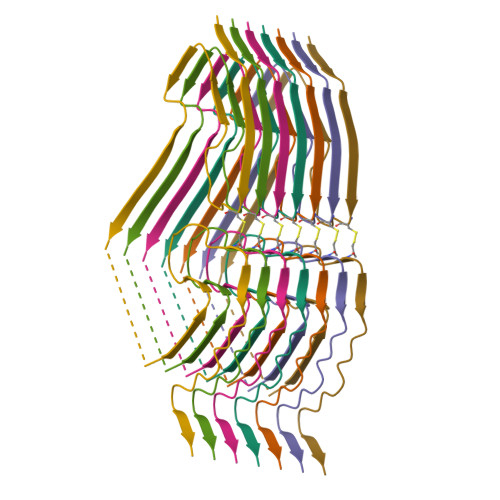Role of mutations and post-translational modifications in systemic AL amyloidosis studied by cryo-EM.
Radamaker, L., Karimi-Farsijani, S., Andreotti, G., Baur, J., Neumann, M., Schreiner, S., Berghaus, N., Motika, R., Haupt, C., Walther, P., Schmidt, V., Huhn, S., Hegenbart, U., Schonland, S.O., Wiese, S., Read, C., Schmidt, M., Fandrich, M.(2021) Nat Commun 12: 6434-6434
- PubMed: 34741031
- DOI: https://doi.org/10.1038/s41467-021-26553-9
- Primary Citation of Related Structures:
7NSL - PubMed Abstract:
Systemic AL amyloidosis is a rare disease that is caused by the misfolding of immunoglobulin light chains (LCs). Potential drivers of amyloid formation in this disease are post-translational modifications (PTMs) and the mutational changes that are inserted into the LCs by somatic hypermutation. Here we present the cryo electron microscopy (cryo-EM) structure of an ex vivo λ1-AL amyloid fibril whose deposits disrupt the ordered cardiomyocyte structure in the heart. The fibril protein contains six mutational changes compared to the germ line and three PTMs (disulfide bond, N-glycosylation and pyroglutamylation). Our data imply that the disulfide bond, glycosylation and mutational changes contribute to determining the fibril protein fold and help to generate a fibril morphology that is able to withstand proteolytic degradation inside the body.
Organizational Affiliation:
Institute of Protein Biochemistry, Ulm University, 89081, Ulm, Germany.
















